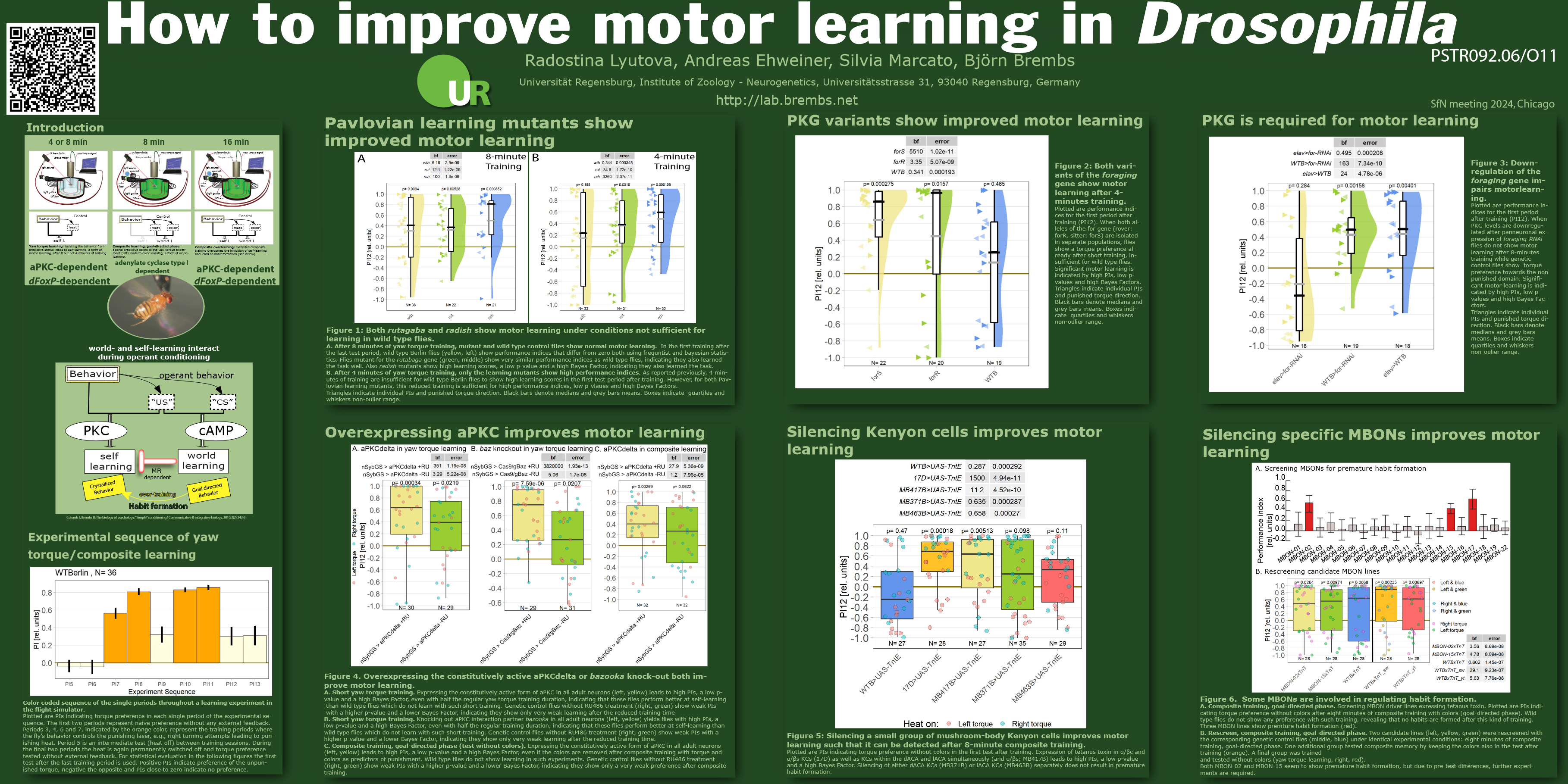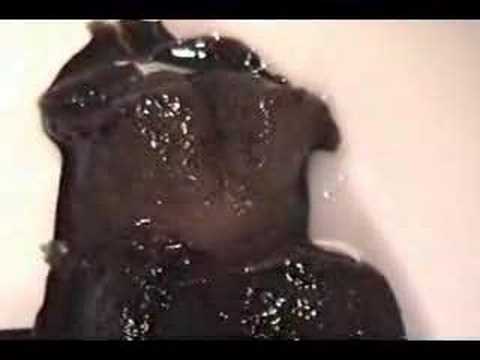The human FOXP2 (Forkhead Box P2) gene has been identified as a key component for the development of language. Such vocal learning is a form of motor learning that proceeds slowly from babbling in toddlers (or subsong in songbirds) towards speech and language in adults (or crystallized song in birds). This particular motor learning process can be conceptualized as operant self-learning, in which the organism learns the correct actions only by evaluating the outcomes of its previous behavior, in the absence of other sensory cues beyond the feedback. In the fruit fly Drosophila, the dFoxP orthologue has been shown to also be involved in operant self-learning of yaw torque (attempted rotations around the vertical body axis) in tethered flies, an experiment conceptually analogous to vocal learning. The expression, function and mechanisms of action of dFoxP remain to be elucidated. In this work, we generated three transgenic lines using the CRISPR/Cas9 technique: a conditional knockout, an isoform-b-specific GAL4 knock-in and a LexA knock-in that targets all three known isoforms. The GAL4 knock-in confirmed previous results of FoxP expression in neurons, but not in Glia. Moreover, strong expression was found in the protocerebral bridge, saddle, vest and superior medial protocerebrum. Interestingly, the mushroom bodies were not labeled by this technique. Antibody stainings and the LexA knock-in revealed a much broader FoxP expression with only ~40% of FoxP neurons expressing isoform b. The conditional knock-down lines yielded weaker behavioral phenotypes in a locomotor experiment (Buridan’s paradigm) when the gene was knocked-out in the adult stages compared to knock-out throughout development, confirming the developmental role of the transcription factor. The three lines were also used in different knock-out and silencing strategies and tested for operant self-learning at the torque meter.















